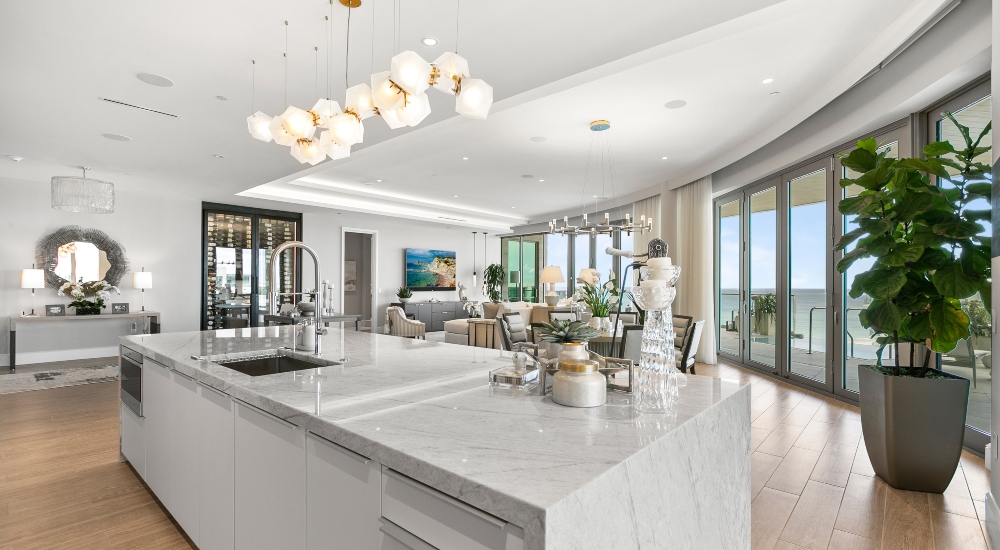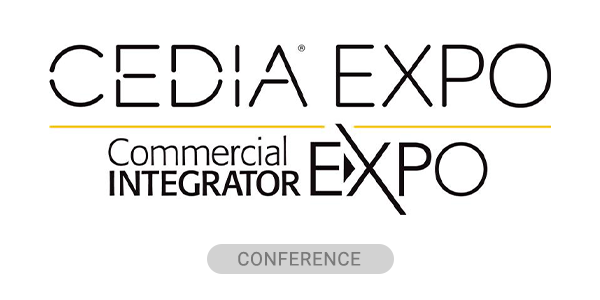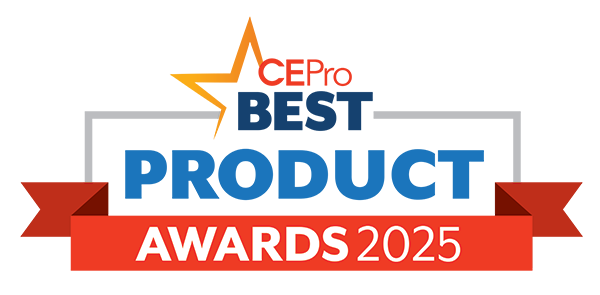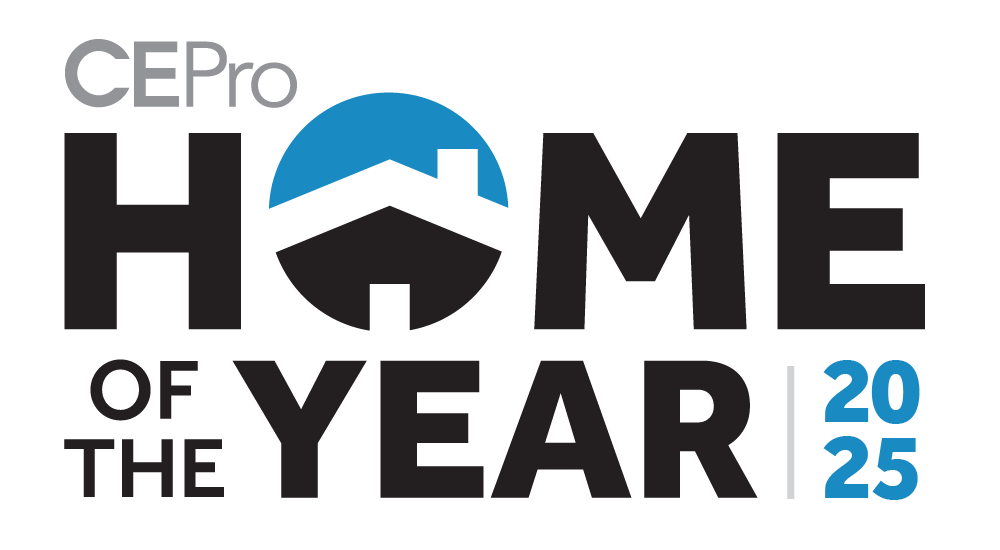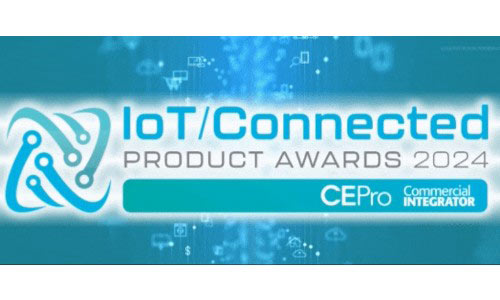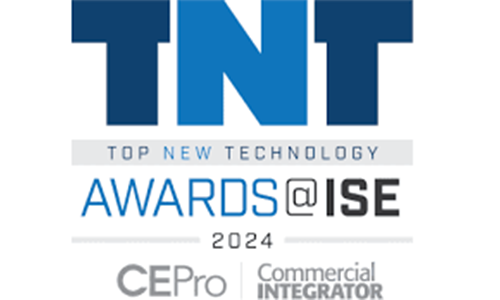Lighting has long been either a designer’s or electrician’s game. However, with the advent of advanced controls and automation, that game has changed, with integrators and designers frequently collaborating on projects. While the success of these projects can be measured in terms of revenue and referral, just as vital to that success is the client experience, according to lighting experts Scott Smith of Arche Lighting and Rebecca Nambier of John Cullen Lighting from a panel on the Smart Stage at CEDIA Expo/CIX 2025.
To achieve all three objectives, however, professionals need to look beyond raw specifications, products and business objectives and instead incorporate an integrated design philosophy in their lighting practices that looks at the aforementioned elements as puzzle pieces in unlocking the best client experience possible.
What is Integrated Lighting Design: A Primer
Integrated design is, broadly, a holistic approach to design that incorporates all factors that would normally take place separately across the design process all at once to achieve a grander vision for the client at the end of the process.
For what integrators and designers might be working on with lighting, this can mean factoring in specific elements such as:
- The design of the home
- Material specifications
- Budgetary constrictions
- Client lifestyle patterns
- And mutual business objectives
The goal of integrated design is to identify these elements of a project as early as possible so that they can be reconciled with one another to achieve a system that can focus more on atmosphere and client enjoyment than its disparate parts.
How Integrators Fit into the Equation
With the growing role home automation and lighting control plays in delivering a well-rounded, atmospheric home environment, integrators have become an essential part of the conversation surrounding lighting design with control and automation now being a critical factor in the designing of systems.
The Part Lighting Design Firms Play
On the other side of the coin, lighting designers have become integral partners for integrators, balancing the technical knowledge and vision of home automation firms with decades of on the job experience and fixture knowledge. In describing the value that these firms provide for integrators, Scott Smith of Arche Lighting had this to say on the Smart Stage at CEDIA Expo/CIX 2025:
- “You can buy the best, most expensive, most elaborate light, but if you put it in the wrong place, it’s not going to look as good as the least expensive that’s in the right place. When you bring somebody like us in, we’ve gone through that learning process already of where the right place is. We’ve made the mistakes already. It’s 30 years of experience you’re getting in lighting design so all you have to do is focus on your area of expertise: the integration.”
What Successful Integrated Lighting Design Achieves
The main measurement of success on a project should be the satisfaction of the client themselves with the system, though this is not the exclusive result of a successful project.
Smith describes success for the client as such:
- “Success is [the client] wanting to be in a space even more now because of the lighting. It has to make them feel comfortable, so I think the success is ultimately having that final result that makes them want to spend more time in their space.”
What That Success Translates to for the Business Partners
In weighing in on what that client satisfaction translates into for the integrator and lighting design firms involved, Rebecca Nambier of John Cullen Lighting explains that by the very nature of business (that being heavily driven by referrals) client satisfaction is a key driver in future work.
Maintaining satisfaction between business partners is also crucial, as well maintained and managed relationships can lead to continued referrals between trades as well.
“The first and greatest success is that [the integrator and lighting designer] still like each other at the end of a project. That’s huge,” says Nambier.
“When we finish a project, we will always photograph it. That goes into our portfolio. It goes into our varying online marketing. It goes into awards. It goes into print. It goes into so many things. And every single time the integrator’s name is going to be mentioned, so they’re able to capitalize off of that in a way that brings them business.”
Success Factors When Working Toward Integrated Lighting Design Approach
When it comes to successfully implementing an integrated approach on a project, it comes down to three core elements:
- Communication: A constant line of communication needs to be present throughout the project, not just to identify the initial goals, but to also keep up with any changes while maintaining transparency between all stakeholders.
- Understanding of Roles: Walking hand-in-hand with communication, an understanding of expectations and roles are needed so that all collaborative partners are able to leverage their expertise in ways that ultimately benefit the end client.
- Vision: With the ultimate goal of delivering a functional, seamless and simple system at the end of a project, it is imperative that both sides maintain the client’s vision without getting lost in the weeds over new products and features. Seamless, intuitive interactions with the home environment are key.
What Does Good Communication Look Like Between Trades?
To the point of communication, Nambier makes it clear that an open line of dialogue needs to be present between trade partners, with updates occurring on a near constant basis. She does also point out, however, that beyond established business discussions, making time for more casual encounters, such as lunch breaks, can also help maintain more natural and collaborative lines of communication on a project as well.
- “[Successful communication is] when you are continuously meeting or having calls. If I make a mistake on my projects, we’re talking about that before it becomes an issue on site. We’re all human, and we’re all going to make mistakes.”
- “The best projects are the ones where we stood with the client, together as a unit, as one company, rather than being individual practices that do our own thing at our own pace, so that constant back and forth is crucial to everything.”
What Does Good Collaboration Look Like on a Project?
On the topic of collaboration, Smith is quick to point out that it shouldn’t be about trying to one side to help out with the work of the other. Instead, each partner on a project has their area of expertise, and collaboration should instead be focused on using that area of expertise to help fill in the gaps where the other might not be able to fill.
In his eyes, the expertise of the integrator is being able to string together the control and environmental aspects of lighting and make everything work together in a cohesive setup. The lighting firm’s expertise is knowing what fixtures can help achieve that end goal–among other things–so they should take the load off the integrators there.
- “Most of the integrators that I partner with very rarely want to get involved [with the design]. They’re like, ‘Hey, you handle this. That’s you.’ They like us to take that heavy lifting off of them in terms of identifying product, etcetera, because that’s what my firm does. Then, of course, they’re sharing with me that shared vision of lighting control in there so we can work with them on that.”
Clarifying on expertise, Nambier also added:
- “[The lighting designer] will be that conduit between the interior designer to know the textures, the materials, and all the other individual bits. That way, the integrator can focus on the integration of technology. We are just one piece of that puzzle so that they can take what we have gathered for them, interpret it from a fixtures perspective, and then just order it and install it.”
Avoiding Pitfalls in Overspecification and Feature Creep
Still, between the two partners, it is all too easy to get wrapped up in specific products and features that, while seemingly perfect, can fast create a runaway project. According to Smith and Nambier, staying cognizant of timelines and budget are simple ways to keep systems in check as a project progresses, with both advocating for restraint even in the face of finding a product that might solve for a given number of client requests.
Smith in particular notes there’s a risk with adding anything brand new to a project, as it could introduce unexpected issues and variables that can impact timelines and client satisfaction. In his own words, it’s about:
- “Not looking outside of the box, but trying to stay in there and make sure the project is completed. We can always look at it for the next one.”
Since integrated lighting design aims to identify the individual factors that will ultimately contribute to client satisfaction early on, one of the challenging aspects of the approach is being able to maintain the course once started. Corrections are inevitable and often necessary, but maintaining open lines of communication while also considering the aforementioned budget and time constraints can help identify which of these are truly necessary, and which are not.
Timing is Critical
Given that integrated lighting design is an approach rooted in understanding all contributing factors of a project when it comes to the design of a system, it is an approach that thrives in the earliest stages of a project. As such, contributing trade partners need to work to get one another involved in a project as early as possible if they are not already present in the first place. This is something that may as well be easier said than done in the design-build industry, however, integrated design practices also serve as facilitative measures towards making it happen.
By building stronger communication and collaborative bonds with trade partners, it boosts the likelihood of being brought onto projects earlier in the timeline, allowing for better implementations of an integrated lighting design approach. That being said, we are not operating in a perfect world. There will be times regardless where you or a partner might not be brought onto a project at the best time, and in those times, staying cognizant of communication, roles and the project elements that will ultimately contribute to client satisfaction will still be important to the overall success of the project.
Final Takeaways
While the end goal is to make sure the client is happy and the home system looks beautiful, much of the challenge in achieving this lies in navigating the interpersonal and professional relationships encountered on the job site. In many ways, integrated lighting design seeks to anticipate these interactions and leverage them to the benefit of client.
At the same time, integrators who are able to successfully collaborate with lighting designers and other trades in this way stand to benefit more in the way of business by being able to deliver a quality product while building foundational relationships in a new category.
Rather than having professionals stick to their respective lanes, integrated lighting design seeks to identify professional expertise and leverage individual strengths as pieces of the broader puzzle, with the success of the clients being the sole unifying vision that unites them.
For integrators just getting into the lighting category, this approach opens up the opportunity to explore a new avenue of business development that still allows them to focus on what made them successful in the first place while learning from professionals in the field.
